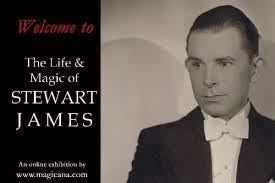A master magician's methods to manufacture exceptional ideas
Describing the techniques of a magician who created more than 1000 magic tricks

Manufacturing Ideas
In an earlier newsletter I talked about creative problem solving by sharing some information about three good books on the topic. My favorite book of the three is Advantage Play by David Ben, which uses the framing device of creating magic tricks and illusions as a means to teach the reader about creative problem solving. My favorite chapter of the book is called Manufacturing Ideas. David Ben is a tax lawyer turned magician who befriended a number of accomplished magicians and the techniques Ben shares in this chapter originated with Stewart James, an amazingly prolific creator of magic tricks. During his lifetime James created more than 1,000 magic tricks and documented his work in two large publications totaling 2,700 pages of material. He may be best known for inventing the Miraskill card effect and principle. David Ben calls James the most prolific inventor of magic tricks of the 20th century.
The Manufacturing Ideas chapter describes two main ways that James was able to create so many magic tricks: Creative Infrastructure and Idea Kindlers. I’ll write about Creative Infrastructure in this post and I’ll write about Idea Kindlers in a follow up post. I’ll also add my own thoughts and observations to the material being presented.
Please note that all of this information and these techniques came from Stewart James via David Ben. I may be presenting the information a bit differently that it was presented in Advantage Play but these ideas are not my own.
And now, with a wave of my magic wand…

Presenting Stewart James
Stewart James was born in Canada in 1908, the son of strict Presbyterian parents. He lived under significant restrictions - he was forbidden to play with other children, as an example. This environment forced James to turn inward to his imagination as a means of entertainment and magic tricks fascinated him at an early age. His curiosity and determination led him to explore tricks and illusions in great detail while compiling tremendous knowledge and skill about magic. He was driven to learn and experiment intensively, as we can witness in his prolific work as a professional magician. His Creative Infrastructure was one of the keys to his success, supporting his research and work.
Creative Infrastructure revealed
James’s Creative Infrastructure for studying and creating magic tricks had three main parts:
Attitude and approach
A system to store, access and share information
Other people
Attitude and approach
The phrase “the power of positive thinking” is a loaded one and seems trite in today’s age. And yet we have books like Mindset (Dr. Carol Dweck), which seems to be one of the more accepted books on the subject of the use of a “growth mindset”, which suggests openness, courage and a belief in the possibility that an individual can improve if they remain open to the possibility of growth.
Positive thinking does describe Stewart James’s approach to developing magic tricks. Put simply, James maintained a belief that he would be able to find a way to achieve a trick or illusion that he wanted to create. He would separate a potential magic trick into three components: object, effect and method. This gave him a huge range of possibilities to explore for a piece of magic that he wanted to create.
As David Ben describes in Advantage Play, James believed that any solution that he wanted to achieve already existed somewhere in the world: he just needed to be persistent and patient enough to find one that would work for him.
Several other ideas that buttressed his belief in possibility:
James believed that the creative process was “a journey to a destination in the mind”. He used a mental construct called The Other Place to frame his thinking. The Other Place was “a repository of principles, inherent in nature that, once discovered and applied, could make any problem disappear”.
He regarded his mind as a separate entity from himself as a means of tapping into the “subconscious” mind, the thoughts and ideas that seem to spring up out of nowhere but may be the result of different thought processes occurring in parallel with our conscious thinking.
He refused to believe that creativity was limited to a specific time of day.
His mostly solitary years as a youth, plus dealing with teasing and bullying helped strengthen him to bear criticism and have the courage to follow his own unusual ideas, going against popular thought to function as an independent thinker.
The development of an Inner Sanctum (even if only in his mind - perhaps a cousin construct to Hadot’s Inner Citadel), which was a repository of knowledge plus the use of imaginary personas (a combination of real and imagined people) as a means of asking himself questions to develop ideas.
I’ve read other examples of the ideas of virtual boards of directors or deBono’s six thinking hats as means to focus your thinking in certain ways. Stewart James apparently took this way of thinking quite seriously and used it extensively.
As you read through this section you might be developing a mental image of James as an eccentric loner. Keep reading: you may find your opinion will evolve after reading through the other two sections of Creative Infrastructure.
A system to store, access and share information
One simply does not generate as much material as Stewart James without a system to manage a ton of information. James died in 1996: therefore, personal computers were non-existent for much of his life and thus much of his research existed in magazine articles, letters (he was a prolific correspondent), plus whatever relevant books he read and notes he took. He would use a combination of notes on paper bookmarks and index cards to manage the information he gathered during his research.
Stewart James’s approach to capturing and using some information would have borne some resemblance to approaches like commonplace books and Zettlekastens. Without, of course, the benefits of 21st century technology.
Other people
Stewart James was not a complete hermit by any stretch of the imagination. He maintained correspondence and friendships with a number of professional magicians or interested amateurs. David Ben himself was close to Stewart James, meeting with him regularly. Another James protege and friend was Allen Slaight, who was a magician early in life before branching into broadcasting and running Standard Broadcasting Corporation, Slaight Communications and other radio station enterprises.
A key component of Creative Infrastructure was real relationships with peers in the magic profession, switching roles between mentor and mentee as needed. Whether you call it networking, professional relationships or schmoozing, Stewart James’s participation in the community of professional magicians was undoubtedly a key to his personal success in addition to the knowledge he shared with his peers.
For my next trick
Hopefully I’ve given you a taste of Stewart James’s approach to creativity. In the next post I’ll talk about the Idea Kindlers James used to help him create new magic tricks. I think you’ll be inspired with some of the varied (and possibly bizarre) methods he used to create new magic tricks. So consider yourself compelled to read my next newsletter! ::vanishes in a puff of smoke::



This was fascinating, and also now I need to learn more about his magic tricks! I always wanted to be good at them...
Really interesting!